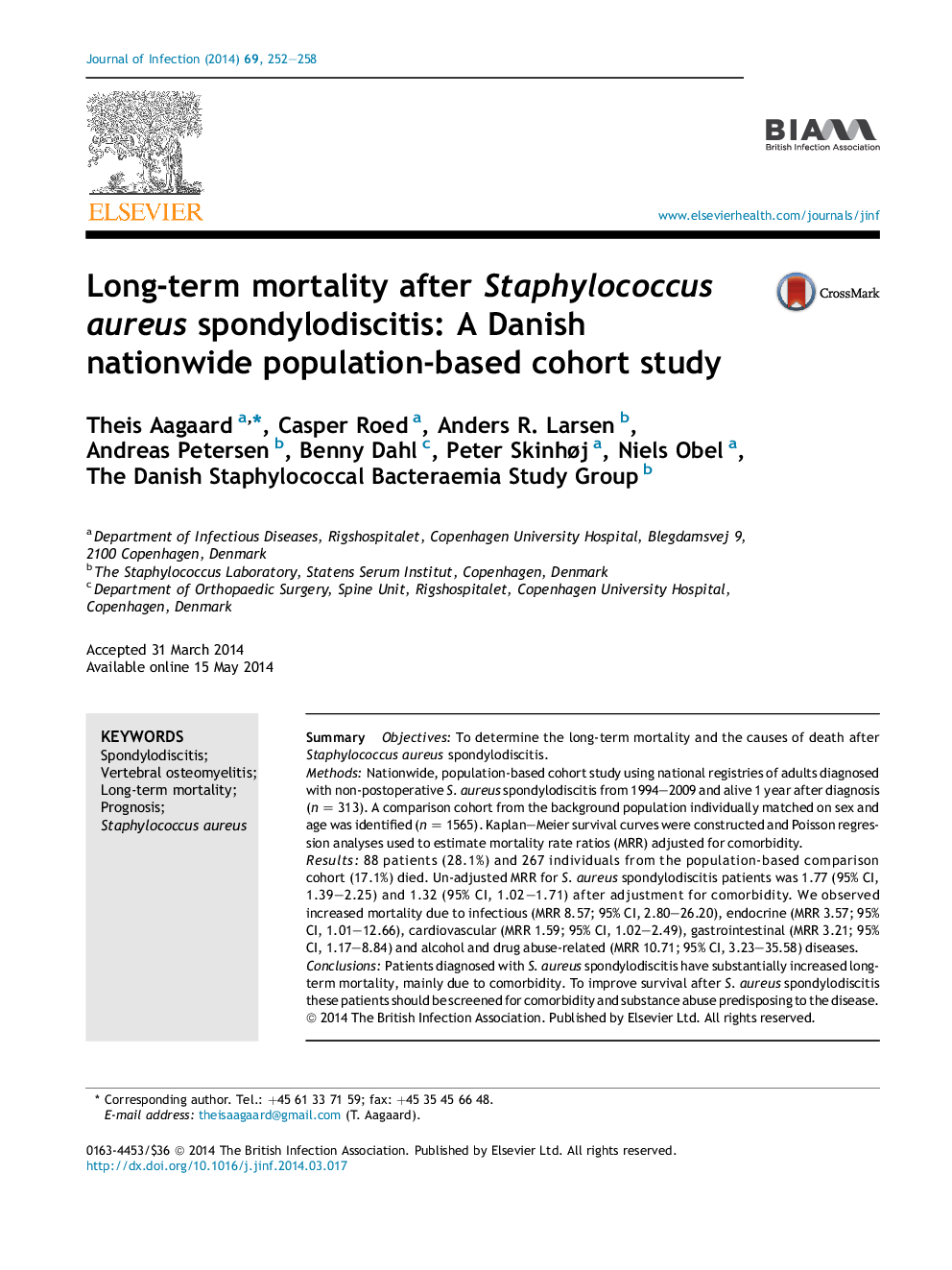| Article ID | Journal | Published Year | Pages | File Type |
|---|---|---|---|---|
| 3374706 | Journal of Infection | 2014 | 7 Pages |
SummaryObjectivesTo determine the long-term mortality and the causes of death after Staphylococcus aureus spondylodiscitis.MethodsNationwide, population-based cohort study using national registries of adults diagnosed with non-postoperative S. aureus spondylodiscitis from 1994–2009 and alive 1 year after diagnosis (n = 313). A comparison cohort from the background population individually matched on sex and age was identified (n = 1565). Kaplan–Meier survival curves were constructed and Poisson regression analyses used to estimate mortality rate ratios (MRR) adjusted for comorbidity.Results88 patients (28.1%) and 267 individuals from the population-based comparison cohort (17.1%) died. Un-adjusted MRR for S. aureus spondylodiscitis patients was 1.77 (95% CI, 1.39–2.25) and 1.32 (95% CI, 1.02–1.71) after adjustment for comorbidity. We observed increased mortality due to infectious (MRR 8.57; 95% CI, 2.80–26.20), endocrine (MRR 3.57; 95% CI, 1.01–12.66), cardiovascular (MRR 1.59; 95% CI, 1.02–2.49), gastrointestinal (MRR 3.21; 95% CI, 1.17–8.84) and alcohol and drug abuse-related (MRR 10.71; 95% CI, 3.23–35.58) diseases.ConclusionsPatients diagnosed with S. aureus spondylodiscitis have substantially increased long-term mortality, mainly due to comorbidity. To improve survival after S. aureus spondylodiscitis these patients should be screened for comorbidity and substance abuse predisposing to the disease.
